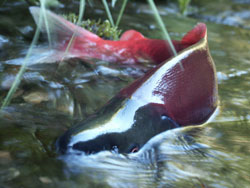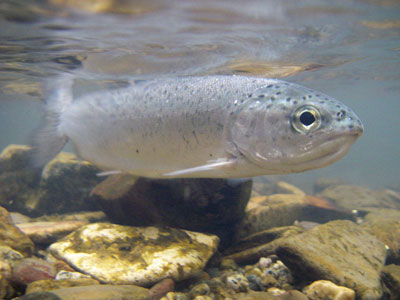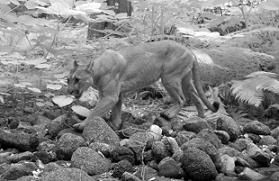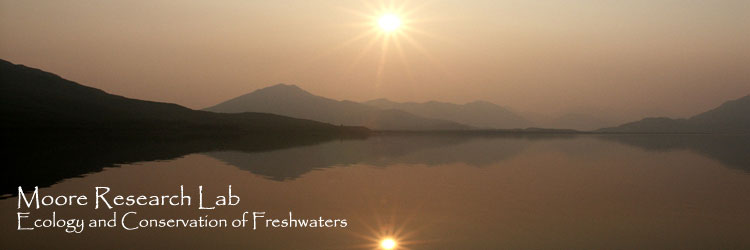
We focus our research on the ecology and conservation of freshwaters. Freshwaters are crucial for life, but are often heavily impacted by human activities. General interests include species interactions, biogeochemistry, subsidies, ecosystem engineers, disturbance, and global change. We do much of our work in the freshwaters that Pacific salmon call home and so, not surprisingly, work quite a bit on this group of ecologically important species. We aim to do research that has conservation and management implications, using a combination of field experiments, field observations, and modeling.
Current research projects include:
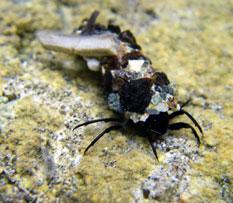
COMMUNITY DISASSEMBLY
Communities are being taken apart and put back together by the dual processes of species loss (extirpation) and gain (invasion). We are interested in questions such as: are there disassembly rules? How does realistic biodiversity change alter ecosystem processes?
Collaborators: Mark Novak (OSU), Julian Olden (UW)
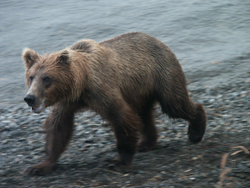
STABLE ISOTOPES IN ECOLOGY
Ecologists are increasingly turning to the use of stable isotopes of elements such as carbon, nitrogen, and oxygen to trace flows of nutrients through ecosystems. We use stable isotopes in our research and also work explicitly developing quantitative tools associated with stable isotope analyses. For example, we have developed a stable isotope mixing model based on a Bayesian framework that allows for the incorporation of uncertainty. The website for this model is: http://conserver.iugo-cafe.org/view.php?id=50 .
Collaborators: Brice X. Semmens (NOAA), Eric J. Ward (NOAA), and lots of others
INVASIVE SPECIES
Invasive species are an important applied issue and their addition to ecosystems can provide scientific understanding of how species impact ecosystems. We are interested in general patterns of invasion and also study specific invasives as case studies to learn about how species impact food webs and ecosystems. For example, we are studying:
New Zealand mudsnail.--The New Zealand mudsnail is a small snail that has recently started to invade western North America, and has the potential to have widespread impacts. Support: SeaGrant.
Signal Crayfish.--This omnivore was introduced to California in the 1900s; large-scale experiments indicate that this species can control stream food webs and ecosystem processes.
Collaborators: Stephanie M. Carlson (UC Berkeley), Dave Herbst (SNARL)
SALMONID CONSERVATION AND MANAGEMENT
Bird predation and salmon.--We are investigating predator-prey dynamics between birds (such as cormorants, mergansers, and gulls) and juvenile salmon in coastal California watersheds. Data suggest that this predation may be an important source of mortality for outmigrating coho and steelhead. We have been studying this predator-prey interaction using a combination of radio-tracking, pit-tag recovery, and large-scale experiments. Support: SeaGrant.
Collaborators: Sean Hayes (NOAA), and Scott Shaffer (San Jose State University)
Population diversity and resilience.--Salmon stocks are often composed of a diverse group of locally adapted populations and can also be phenotypically plastic. We are examining patterns of this population diversity within salmon populations and its impacts on resilience. This research has got me thinking more deeply about relationships between population diversity, meta-populations, and resilience.
Collaborators: Michelle McClure (NOAA), Daniel Schindler (UW)
WATERSHED DISTURBANCE
Landscape disturbances are important forces in geology and ecology, yet are fundamentally difficult to study. We are studying the dynamics of the Scott Creek watershed and its imperiled salmonids following a wildfire in the summer of 2009. The goal of this project is to link perspectives and approaches from community ecology with geomophology to gain insight into how disturbances can reset landscapes and communities. Support: NSF Rapid grant.
Collaborators: Brian Dietterick (CalPoly), Noah Finnegan (UCSC), Sean Hayes (NOAA), Susan Sogard (NOAA)
